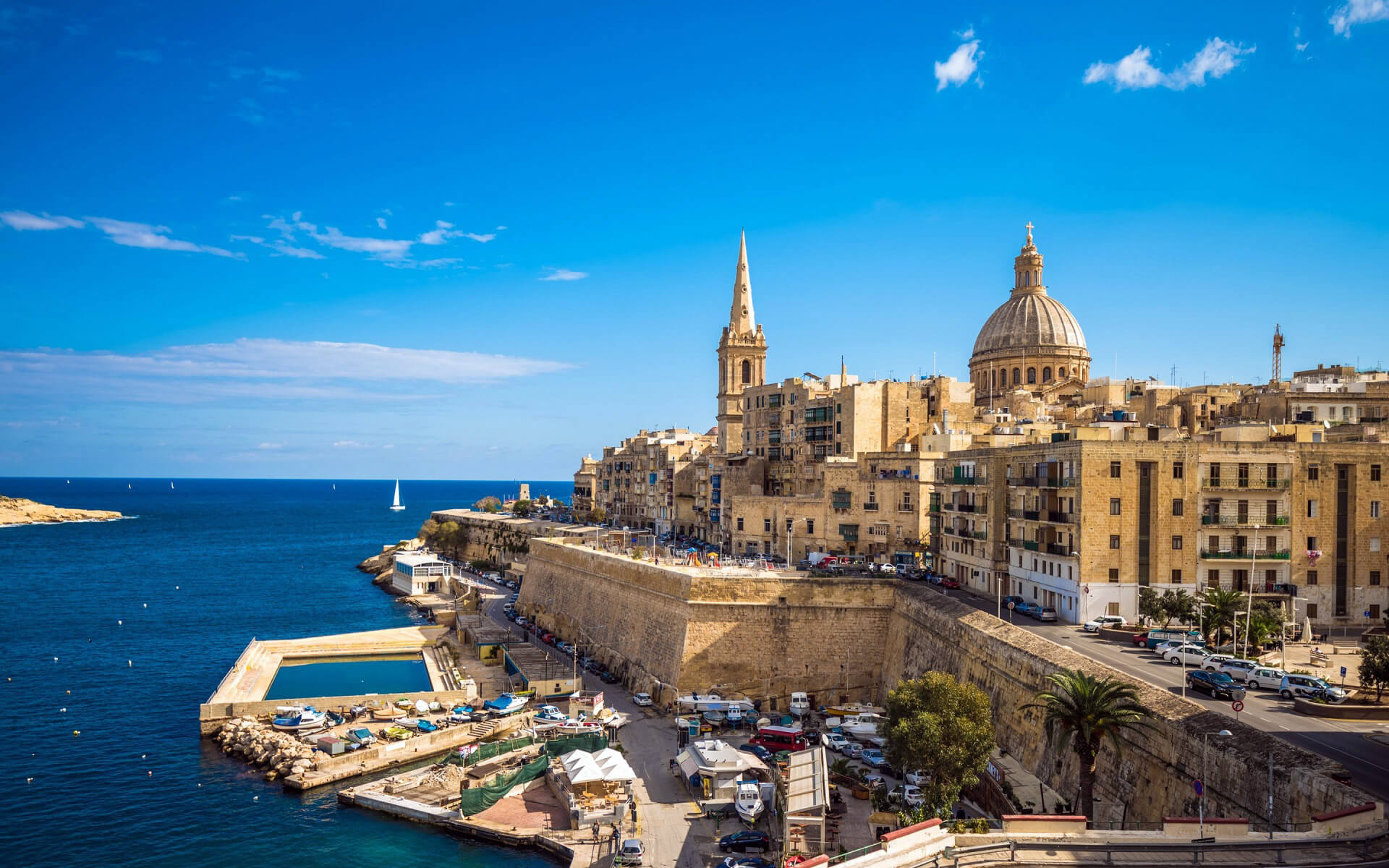Valletta’s street and plaza architecture spans from mid-16th century Baroque through Modernism. The city is the island’s primary cultural center, with a one-of-a-kind collection of churches, palaces, and museums that serve as one of the city’s major tourist attractions. When future British Prime Minister Benjamin Disraeli visited the city in 1830, he described it as “a city of palaces built by gentlemen for gentlemen,” adding that “Valletta equals, if not excels, in its noble architecture, any capital in Europe,” and in other letters called it “comparable to Venice and Cádiz” and “full of palaces worthy of Palladio.”
St. John’s Co-Cathedral, once the Conventual Church of the Knights of Malta, is a historic structure. It has Michelangelo Merisi da Caravaggio’s only signed piece and biggest picture. The Auberge de Castille et Leon, previously the official residence of the Knights of Malta of the Langue of Castille, Léon, and Portugal, is now the Prime Minister’s office in Malta. The Maltese Parliament was housed at the Magisterial Palace, which was erected between 1571 and 1574 and was previously the seat of the Grand Master of the Knights of Malta. It is currently housed in a purpose-made edifice at the city’s entrance. The President of Malta’s offices are still housed at the Magisterial Palace.
Valletta has a Mediterranean climate, with hot, dry summers and moderate, rainy winters.
The city’s closeness to the sea keeps winter temperatures bearable. As a consequence, winters in Valletta are moderate. Average high temperatures range from around 15 degrees Celsius (59 degrees Fahrenheit) in January to around 30 degrees Celsius (86 degrees Fahrenheit) in August, while average low temperatures range from around 10 degrees Celsius (50 degrees Fahrenheit) in January to 22 degrees Celsius (72 degrees Fahrenheit) in August.
Marsamxett and the Grand Harbour are two natural harbours on the Valletta peninsula. Malta’s main port is the Grand Harbour, with unloading quays at adjacent Marsa. A cruise-liner terminal is situated along the Valletta Waterfront’s historic seawall, which Grandmaster Manuel Pinto de Fonseca erected.


